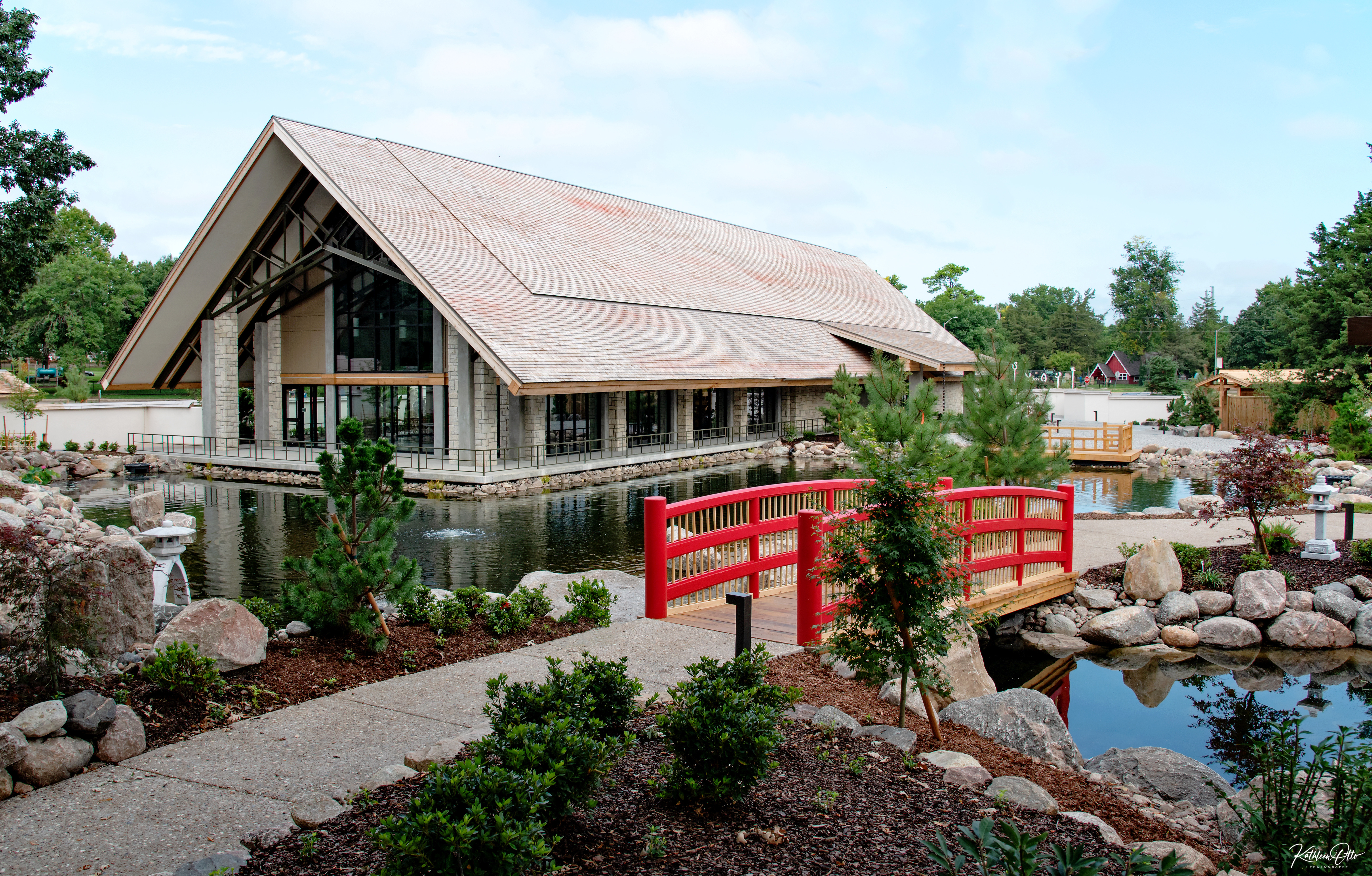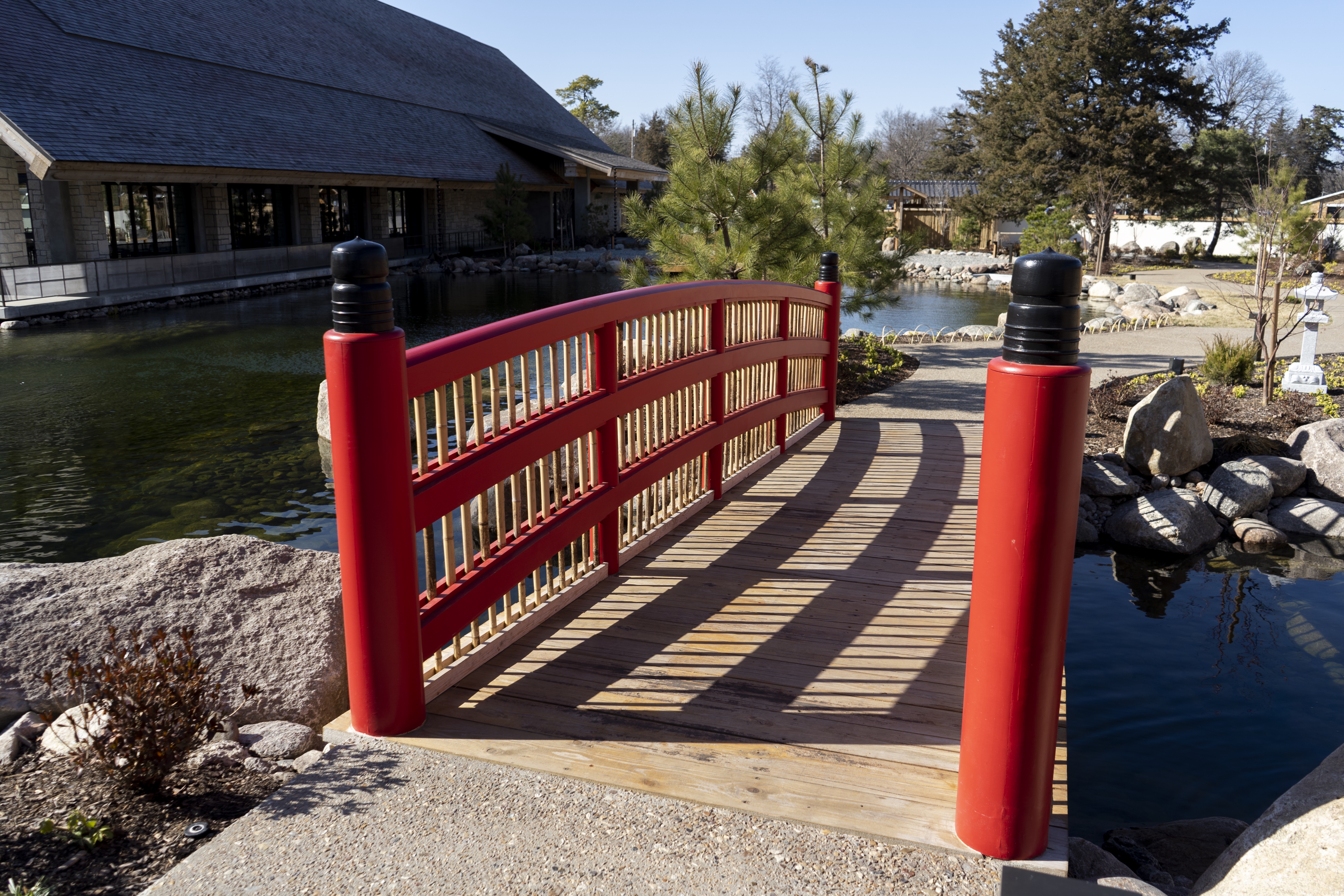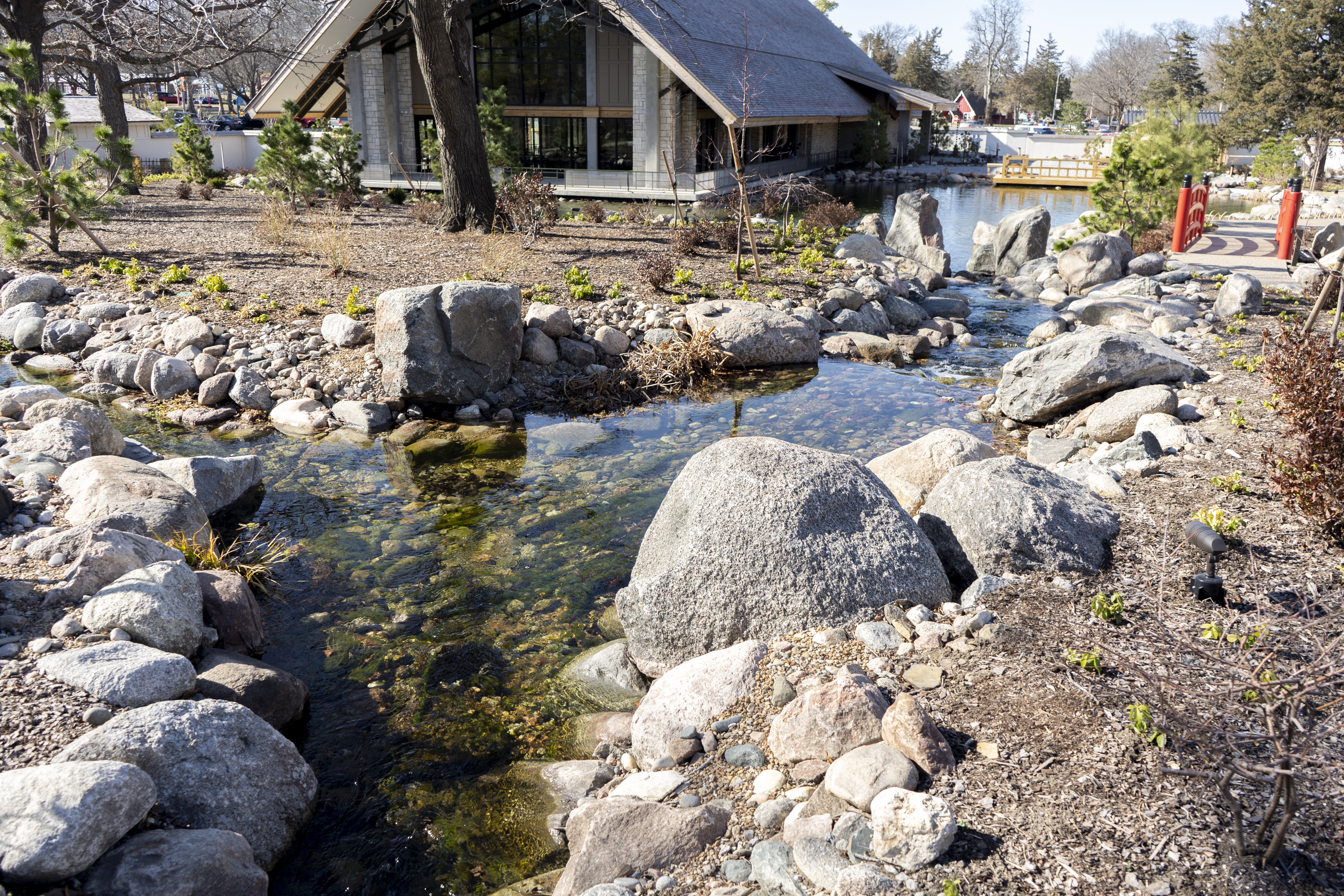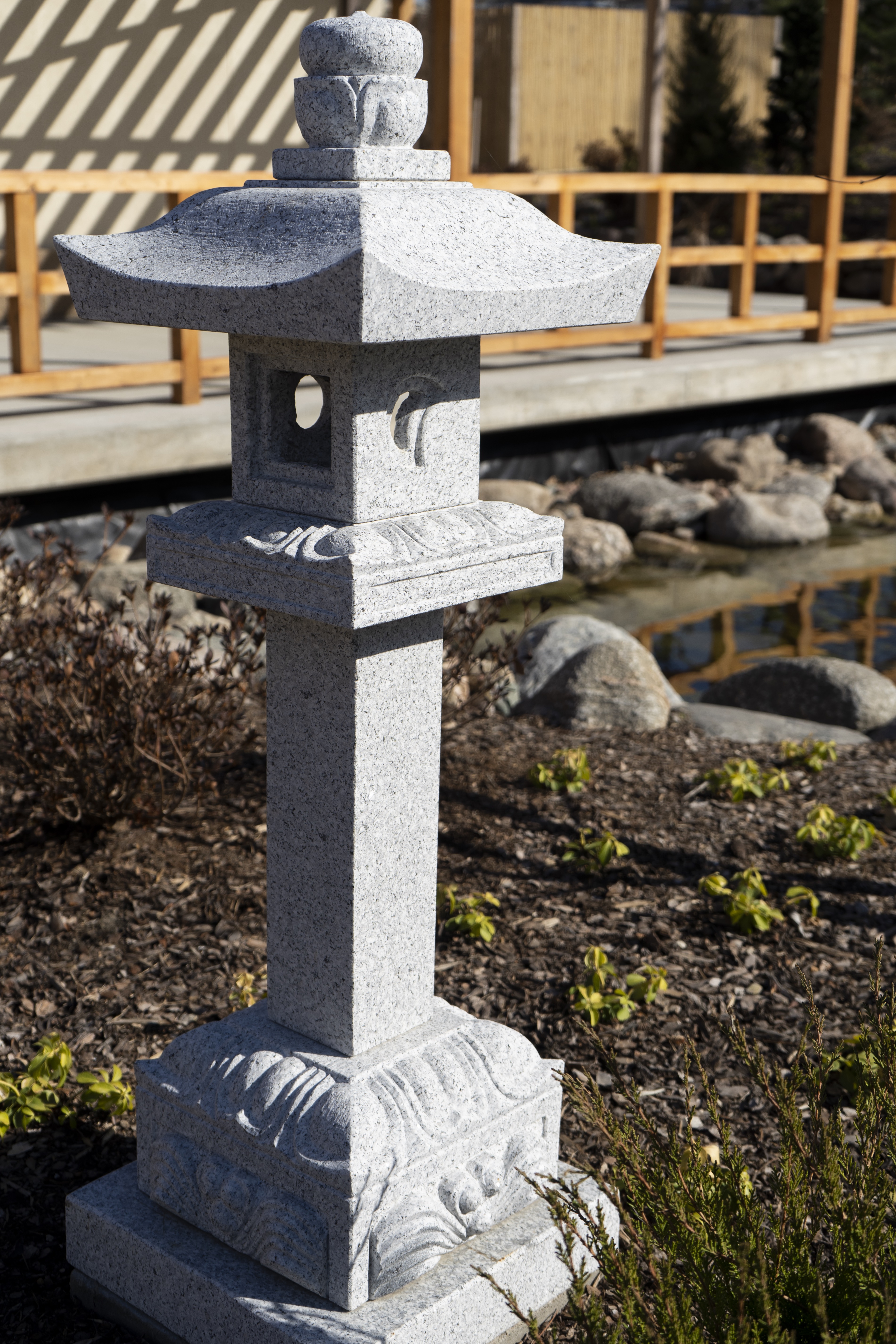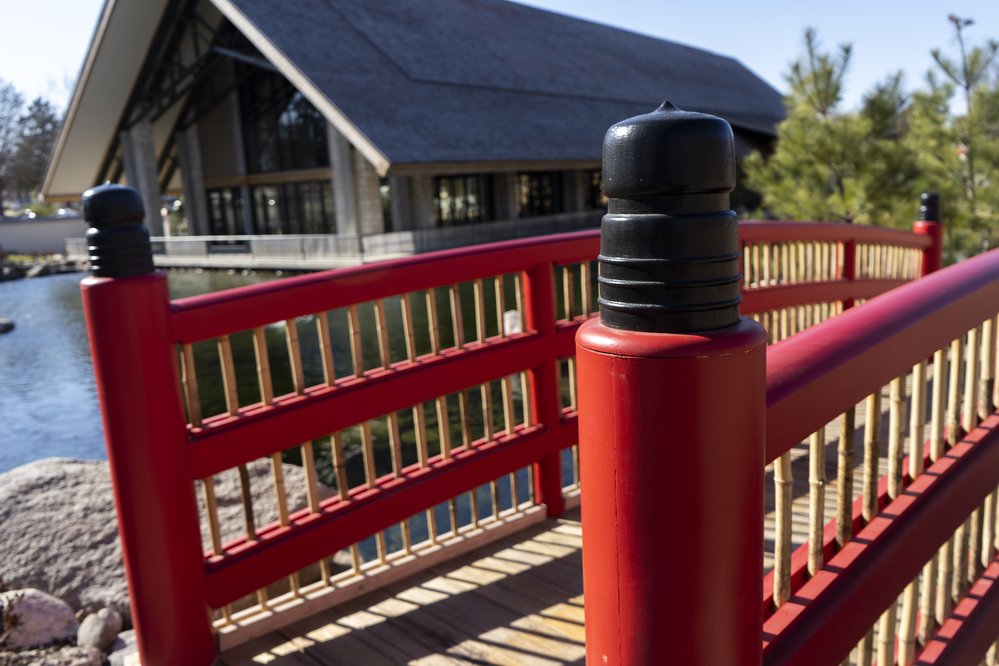
Moon Bridge
The Moon Bridge is symbolic of passage to an important place or state of mind. In the Kay McFarland Japanese Garden, it marks the passage between the sacred upper garden in to the lower garden. In other gardens, the bridge may symbolize a journey between one world and the next or a passage to an important place or state of mind, for instance, from child to adult or single to married.
Before reaching this bridge, the rigid and fluid paths are more narrow and meant for a single person but after the two paths merge and cross over The Moon Bridge the path opens up and becomes wider and is now meant for more than one person.
The red color is significant in Japanese culture as red is significant and natural is second. This means if something is more important it should be colored red rather than left natural to highlight its significance. This bridge is the more significant in the garden as it symbolizes a change in a person therefore it was painted red. The black caps on this bridge reflect the Buddhist ideal of striving to reach the high point.
After the Moon Bridge, the Nishinogata lantern can be found to the right. This lantern represents love, brightness, and protection from evil as those who passed over the Moon Bridge continue on their journey.
